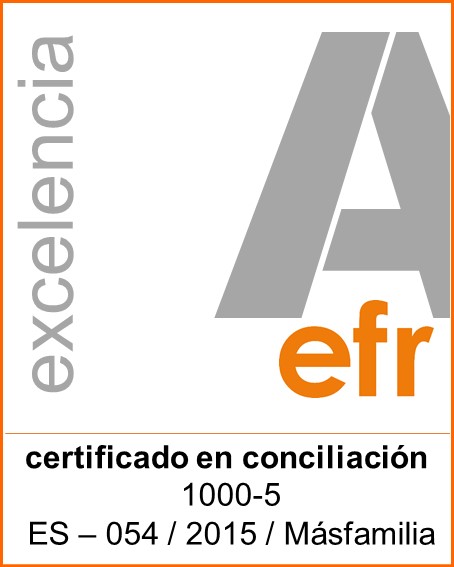We guarantee that Facility Management models, or rather their implementation, provide savings for companies. We have broad experience of this at FMHOUSE, and if there’s one thing we have learnt in all this time, it’s not to raise false hopes. Therefore, we need to understand what has to be done and how much can be saved, without forgetting what it takes, as it comes at a cost.
Feasibility criteria
In order to determine the feasibility of each company’s saving, three points are essential: first, the starting point; second, what I want to achieve; and third, what resources, including time, I have available. Once these three aspects have been established, we can decide if it’s viable and, if it is, we design a tailor-made plan or offer alternatives. Sometimes it’s a good idea to partner up with someone to help you meet your objective.
The risk of irrational saving
We think it’s a little bold for someone who doesn’t know much about a company to affirm that it will save 20% of its operating costs and, worse still, to say that this will be achieved through Facility Management, when their only intention is to squeeze suppliers for purely economic gains. The problem is that we’re so blinded by the message, that sometimes that’s all we want to hear, and as a result, we don’t even consider the risk involved. This would be the same as believing that by simply taking some pills and without making any changes, you’ll lose 20 kilos in two weeks, and we all know some people fall for this.
If I weigh 150 kilos and my goal is to weigh 80, and the only thing I do is join a gym or hire a nutritionist without exercising and continuing to eat as much as I like, the most likely outcome is that I’ll won’t get very far. While the possibility of losing weight is there, an effort is required to achieve it and, more importantly, to sustain it. Two important things to consider in this scenario would be why I want to weigh 80 kilos, and if I’m willing to do what it takes to keep my weight down, including whether it’s healthy or beneficial to do so and, above all, if I get anything out of it because if I don’t, it wont be sustainable over time.
If I want to go down to 80 kilos, that weight isn’t going to suit me and I’ll most probably no longer be competitive. Another possibility could be that I want to quit being a wrestler, but that would change the purpose of the activity, the purpose of the “business.”
The importance of understanding the need
When we do cost benchmarking, we’re compulsively asked how much competitors pay. First we need to know what is required and not compare ourselves to others for the simple reason that they pay more or less, because their objectives and needs will be different.
Once we have assessed and justified where I am and where I ‘m going, I should think about the resources I want to invest and the sacrifice I’m going to make to succeed. Even miraculous weight loss remedies like liposuction require great effort and the acceptance of the risk involved in entering an operating theatre, not to mention changing ones habits afterwards. Otherwise, over time, I’ll be back to square one.
Facility Management models achieve savings by changing internal processes and ways of operating, not by focusing only on end costs. In order to lose 20 kilos, you can’t do it drastically, but rather you need to gradually change your lifestyle and eating habits, setting achievable milestones that will lead you to a goal that’s easier to both meet and maintain, in addition to being aware of what all this involves.
Those who sell Facility Management as a mere cost-saving solution and who have the sole objective of reducing expenditure by coercing the end supplier are, first, making a big mistake by not studying the company’s real needs and, second, being deceitful about what they’re going to provide as a service or what the supplier will be required to deliver, since it’s impossible or at the very least risky to provide services below cost. Let’s be realistic, no company is going to finance our operation, even if we think they will to begin with. It’ll have to pay off somehow. Service suppliers are always your associates, your partners in the model. That’s one of the principles of Facility Management and, if not respected, you’re no longer in a win-win situation, so the essence and, most importantly, the duration of the relationship will be at stake, leading to consequences that we identify in many current contracts with pseudo FM models.
Investment as a saving partner
The more you’re willing to invest, the more weight you lose or the more you save, but you have to decide if it’s worth it and, above all, whether you have the necessary resources to keep it up. The advantage that the weight loss or new situation offers you is not just improved health, but definitely confidence and quality of life too. In Facility Management, new models will enable you to be much more flexible, better respond to the organisation’s demands, and your role as an Facility Manager within the company will have a much more professional image in the eyes of other departments. A good model will also provide the company with more flexibility in operations and, of course, cost savings.
What we do is effective. Facility Management methodology is solid and the models help organisations, but we must defend ourselves against increasing unqualified practice that generates poor performance and mistrust of what we do and how we do it. There are good consulting firms, there are good trainers and there are good service suppliers. Choose well and don’t let yourself be deceived. One piece of advice is to be wary of those who offer you savings in record time or who don’t ask about the resources you are willing to invest in the process or how quickly you want to achieve your goals. They probably intend to lock you up in a cage without food until you lose weight, and they won’t be there when you’re rushed off to hospital.









